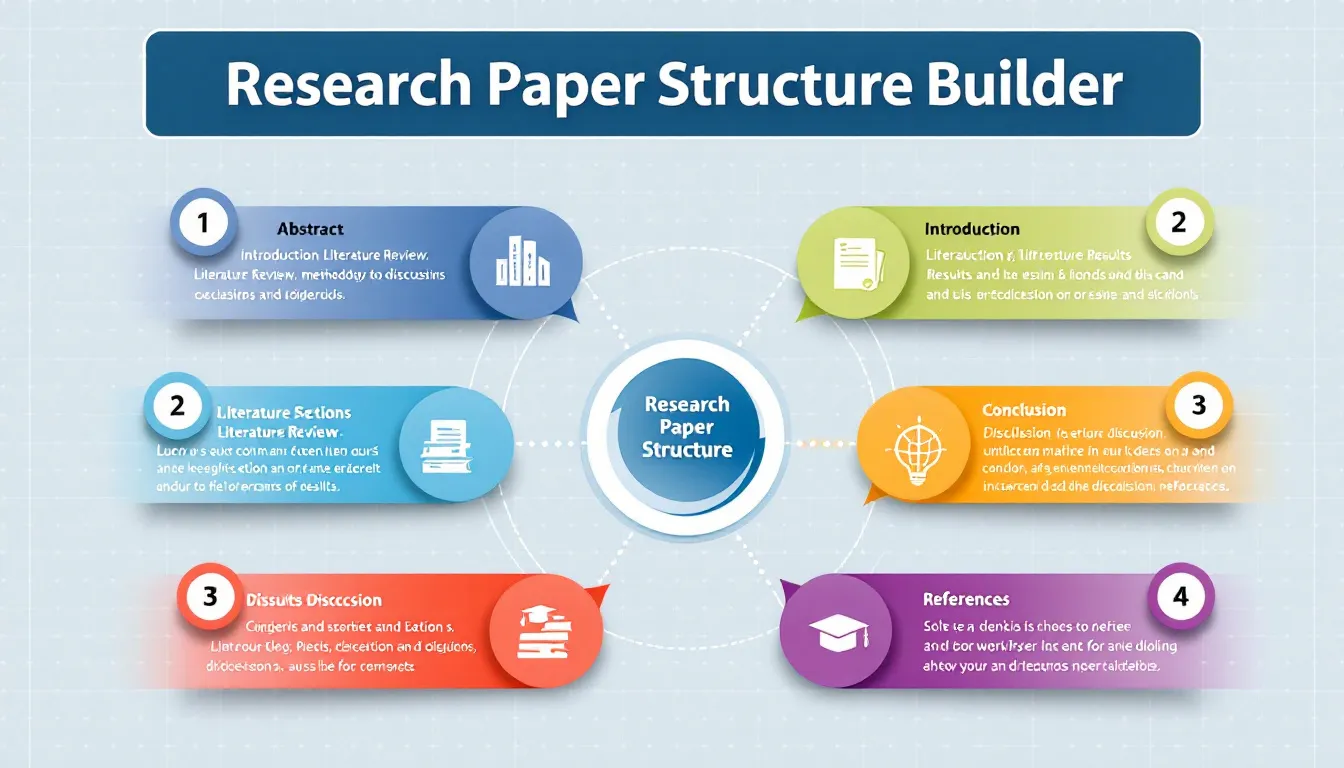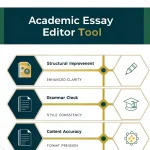Research Paper Structure Builder
Is this tool helpful?
How to Use the Research Paper Structure Builder Effectively
Step-by-Step Instructions
Follow these steps to generate a customized research paper outline that fits your specific academic needs:
- Field of study: Enter your academic discipline, such as Behavioral Economics or Molecular Biology. The more precise you are, the better the outline matches your area.
- Type of paper: Select the paper format from the list. Examples include Systematic Review or Experimental Report, depending on your research goals.
- Citation style: Choose the citation format required for your paper, like Vancouver or Turabian, to align with your institution’s guidelines.
- Research methodology: Pick the approach that fits your study, for example, Ethnographic Study or Longitudinal Analysis.
- Total word count (optional): If you know the full length, enter a number such as 4500 or 12000 to receive sectional word count suggestions.
- Research topic or question: Provide a concise summary of your focus, for example, Effects of urbanization on migratory bird patterns or Role of artificial intelligence in early diagnosis of diseases.
- Click Generate Research Paper Structure to receive your tailored paper outline.
Tips for Best Results
- Be as specific as possible with your field and topic to get a detailed and relevant structure.
- If your exact paper type is missing, choose the closest match or a general research paper option to get adaptable guidance.
- Always confirm your citation style with your institution’s requirements.
- Describe your research topic clearly but succinctly to improve section prompts and structural relevance.
What Is the Research Paper Structure Builder and How It Helps You
Purpose of the Tool
The Research Paper Structure Builder is an online tool designed to help you create a clear and organized framework for your academic writing. It generates tailored outlines that suit your discipline, paper type, and research methods, allowing you to focus more on your content and less on how to arrange it.
Key Benefits for Academic Writing
- Saves time: Quickly produces a complete outline to guide your writing phases.
- Improves coverage: Ensures your paper includes all essential sections relevant to your discipline.
- Adapts to your discipline: Provides specialized section suggestions for fields ranging from arts and humanities to natural and social sciences.
- Supports methodology selection: Offers structural guidance matching your chosen research approach.
- Integrates citation styles: Includes citation placeholders formatted to your preferred style to promote academic integrity.
Practical Applications of the Research Paper Structure Builder
1. Crafting Graduate Theses and Dissertations
Graduate students can leverage this tool to design detailed outlines for complex projects such as doctoral dissertations or master’s theses. For example, a candidate working on a 60,000-word thesis about renewable energy policy can receive structured sections like:
- Abstract
- Introduction (context, problem statement, research questions)
- Literature Review (theories, previous research)
- Methodology (data collection, analysis techniques)
- Findings (data presentation, interpretation)
- Discussion (implications, limitations)
- Conclusion
- References
2. Structuring Undergraduate Research Papers
Undergraduates working on shorter research assignments can organize their ideas clearly with outlines tailored to their subject and paper type. A 4,000-word paper on cultural influences in language learning may feature:
- Introduction (background, objectives)
- Review of Literature
- Methodology (survey, interviews)
- Results
- Discussion
- Conclusion
3. Facilitating Interdisciplinary Research Projects
Projects crossing multiple disciplines benefit from the tool’s flexibility. For example, a study combining Cognitive Science and Artificial Intelligence could receive an outline balancing both fields:
- Abstract
- Introduction (significance of cognitive models and AI)
- Background (key theories from both fields)
- Methodology (experiments, algorithms)
- Results (data from cognitive tasks and AI analysis)
- Discussion (integration and future work)
- Conclusion
Example Calculation: Allocating Word Count for Your Research Paper
When you enter the total word count, the tool suggests balanced word allocations for each paper section based on standard academic practices. For instance, if your paper totals 7000 words, the breakdown might look like this:
$$ \text{SectionWordCount}_i = \text{TotalWordCount} \times \text{SectionPercentage}_i $$- Abstract: 7000 × 3% = 210 words
- Introduction: 7000 × 12% = 840 words
- Literature Review: 7000 × 22% = 1540 words
- Methodology: 7000 × 18% = 1260 words
- Results: 7000 × 20% = 1400 words
- Discussion: 7000 × 20% = 1400 words
- Conclusion: 7000 × 5% = 350 words
- References: 7000 × 0% = Not included in word count
This allocation helps maintain a balanced paper structure, making writing more manageable and aligned with academic expectations.
Important Disclaimer
The calculations, results, and content provided by our tools are not guaranteed to be accurate, complete, or reliable. Users are responsible for verifying and interpreting the results. Our content and tools may contain errors, biases, or inconsistencies. Do not enter personal data, sensitive information, or personally identifiable information in our web forms or tools. Such data entry violates our terms of service and may result in unauthorized disclosure to third parties. We reserve the right to save inputs and outputs from our tools for the purposes of error debugging, bias identification, and performance improvement. External companies providing AI models used in our tools may also save and process data in accordance with their own policies. By using our tools, you consent to this data collection and processing. We reserve the right to limit the usage of our tools based on current usability factors.







